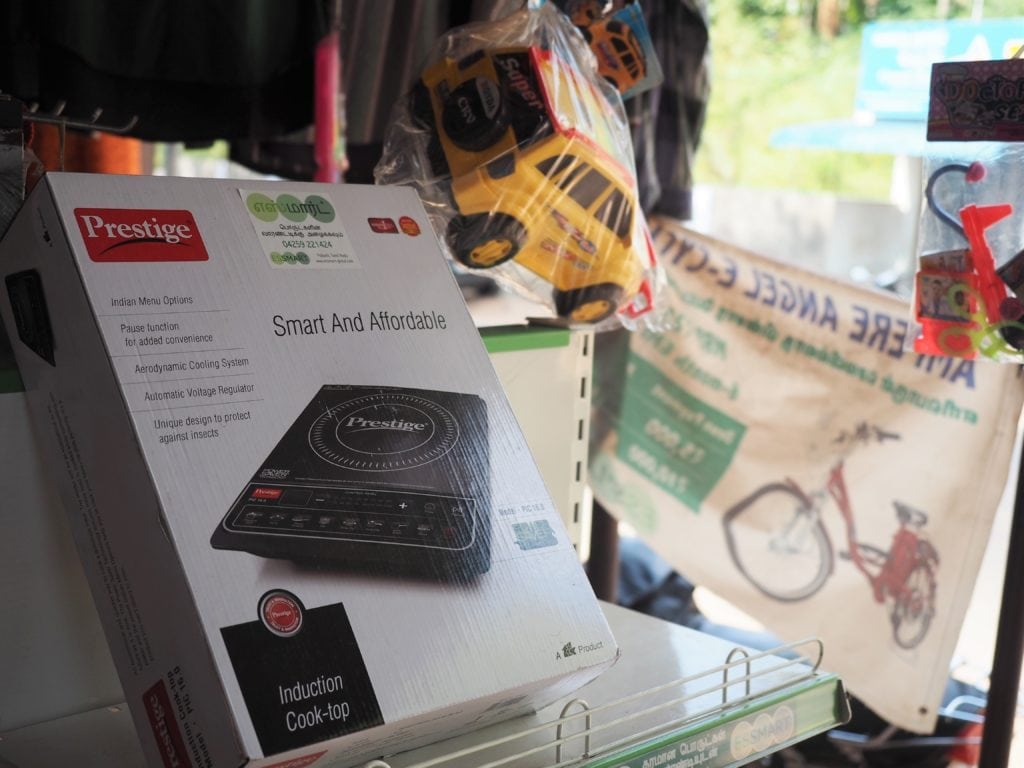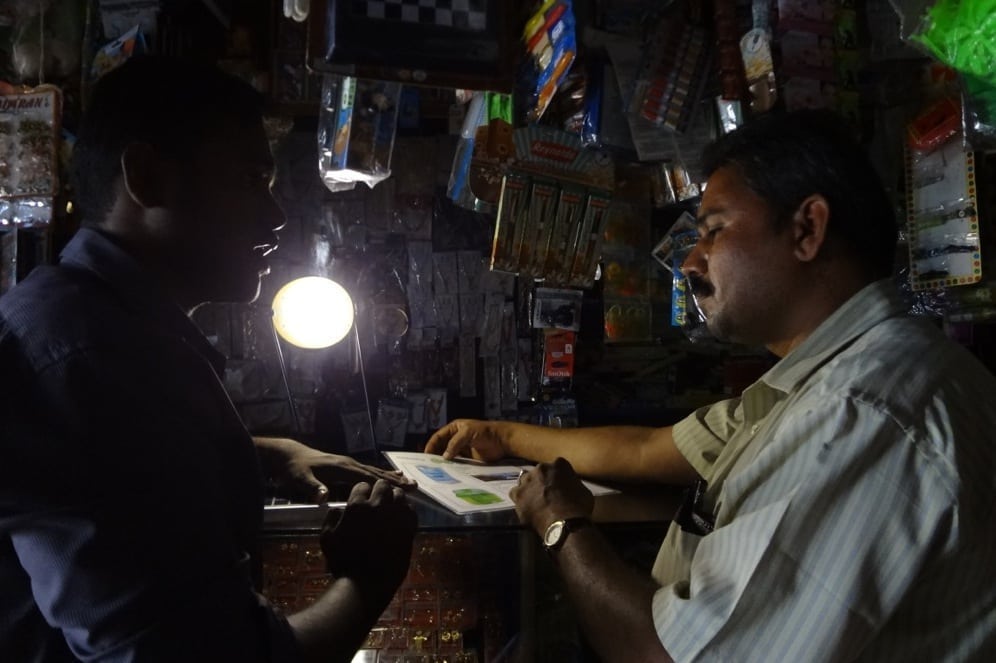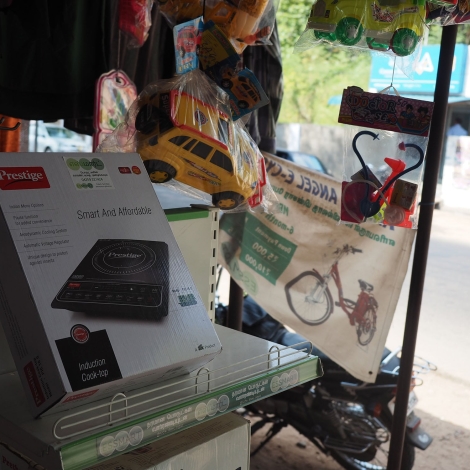Many of you learned about the distribution challenge from my colleague and Essmart’s co-founder, Jackie Stenson. If you haven’t watched her E4C webinar, please do so. It is a fantastic introduction to the problem of distributing the life-improving technologies that many of you are inventing at this moment. She highlights the truth that our social enterprise, Essmart, was founded on: Even though you may have created an amazing technology that is a real labor of love and technical wizardry, distributing it to the people you made it for will be your biggest challenge.
The shopping scene is different in developing regions. Rural customers don’t have access to large retail outlets like Target or online shopping sites like Amazon.com. Rural customers need to be convinced that spending money on a new technology is better than what they already have. In some cases, such as indoor air pollution for example, they need to be convinced that the problem is real. Trust plays a role in local economies; rural customers don’t give their hard-earned cash to just anyone.
For the past year, I’ve overseen Essmart’s operations in the field of southern India. We’re looking for the most effective ways to distribute technologies that make a social impact, such as solar lanterns, water filters, and improved cooking stoves. Our main distribution channel is mom-and-pop retail stores which are common in rural India. We demonstrate products to stores and customers, distribute the goods and enforce manufacturers’ warranties if they fail.
When we started Essmart’s operations about a year ago, Jackie and I had our own ideas about rural distribution. The past year has taught us a lot, however. These are some of the lessons we’ve learned:
How a product is distributed matters more than the product itself
You can design the most appropriate, highest-quality, cost-effective technological solution to a problem plaguing millions but still not be able to distribute the product at scale if you don’t find the right channels for it. Our solution has been to create an ecosystem for large-scale commercialization of social impact technologies. To do this, we’re collaborating with technology suppliers, operational partners, and retail stores.
Local sales require local presence and trust
Potential customers often ask for our company address and are relieved to know that our office is in a nearby town. They want to know that Essmart is a local company and they can get in touch if something goes wrong. Essmart’s local address ensures rural customers that we’re not a hit-and-run company that sells cheap products, sucks money away from villagers, and disappears the next day.
Since trust is crucial, one of Essmart’s primary activities is enticing local retailers to work with us. These shops are commercial gateways to their villages. They know the villagers whom they serve, and Essmart wants to use these trust-based relationships to introduce new, life-improving products.
Your brand should not look cheap, and you shouldn’t market to poor people
From what I’ve seen of the availability of products in rural stores, most companies assume that because rural customers shave lower incomes, they won’t pay for nicer, higher-quality products. As a result, most products that reach rural markets are low cost and low quality.
You will stand out in the marketplace if you position yourself as a high-quality brand. This means treating rural customers with the respect that all customers deserve. Your packaging and marketing materials should be the best. Why would anyone buy a product that looks cheap? Why would anyone buy a product that looks like it’s made for poor people? Aim to relate yet also inspire. Make your product aspirational. It’s better to put happy children, not hungry children, on your packaging.

To win new customers, convince people of the value of the product. Photo: Rob Goodier / E4C
Know what value means to your customers
What will make someone pay more for a new product? Is it the product’s professional finish, the color, the number of LEDs that he or she can count, or the material that it’s made from? In southern India, we’ve found that rural customers want more bang for their buck. That is, given a certain price, the more features the better. For example, a solar lantern that can also charge a mobile phone is more desirable than a solar lantern that just provides lighting. Our rural customers will pay more if the product can do more.
Immediate service is more important than product quality
After-sales service is crucial to the wide-scale distribution of social impact technologies. However, this does not mean that you need to design a product that never fails (which, given rural conditions, is nearly impossible). Instead, you need to make sure that your distribution channel includes immediate, local servicing of failed products. For a rural customer, a broken product isn’t devastating unless nobody comes to fix it.
After-sales service can involve multiple components: user training, a help hotline, intelligent product designs with replaceable parts that local technicians can fix, or working relationships with distributors who will swap out broken products with new ones that suppliers provide.

Expect potential customers to touch and handle products. That is part of selling it. Photo: Rob Goodier / E4C
Allowing customers to touch the product is part of rural marketing
Almost every box that Essmart moves to shops is opened and handled multiple times before it’s finally sold to a rural customer. Seeing is believing for rural customers, and since these are relatively pricey investments, it’s important to let them handle a product before buying it. Be sure that demonstrations will be part of your rural marketing plan.
For higher-value products at USD $100 or more, customer financing helps
Small packets of shampoo revolutionized the way that commodities are purchased in rural areas. Although 100 shampoo packets of 2 mL each costs more than a 200 mL shampoo bottle, rural customers would typically go for the packets because that’s what they can afford at the moment. Agricultural seasons, festivals, and major life events have large effects on the amount of cash a rural customer has on hand. As a result, financing or payment in installments can help rural customers buy higher-value products.
Our retail shops offer credit to their customers on an informal basis. We’d like to do more of this by securing financing and we’re seeking financial partners to help.
The past year has been filled with trying hard, working hard, failing hard, and learning hard. I hope that what Essmart has encountered in the field is useful for your endeavors to make life-improving technologies available to those who are intended to benefit from them.

